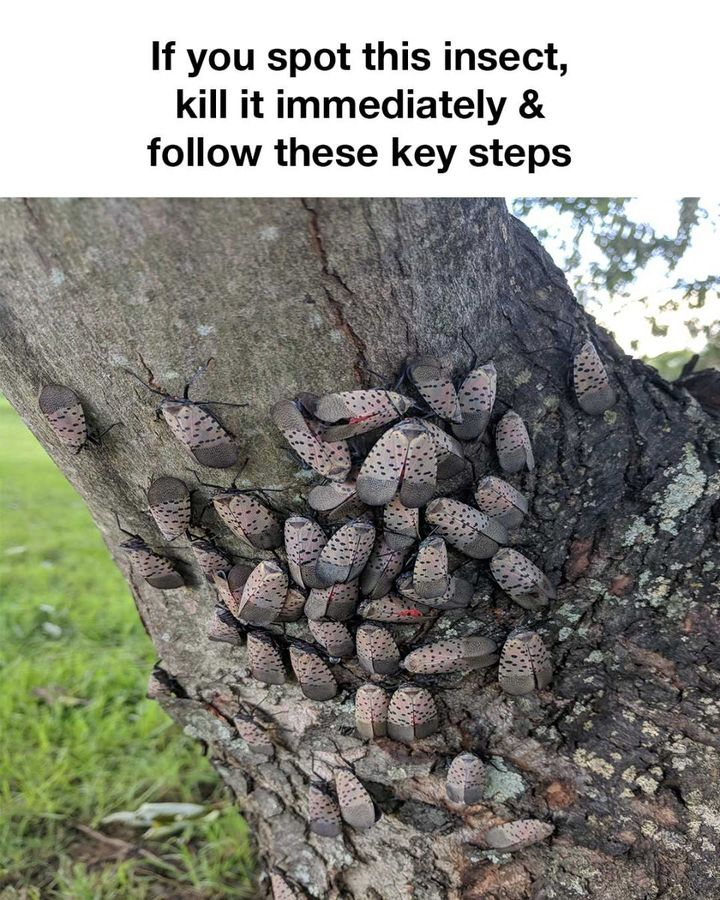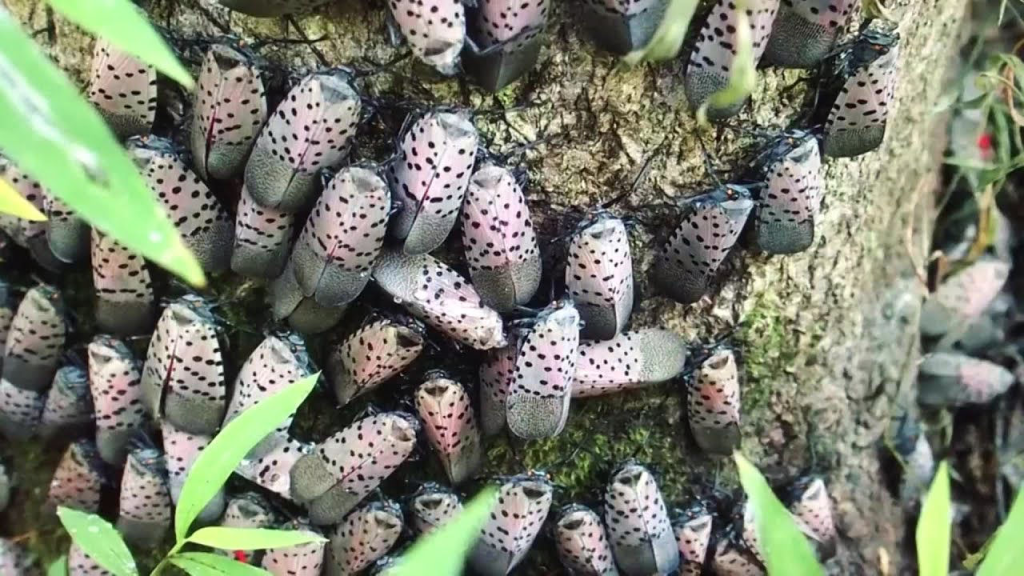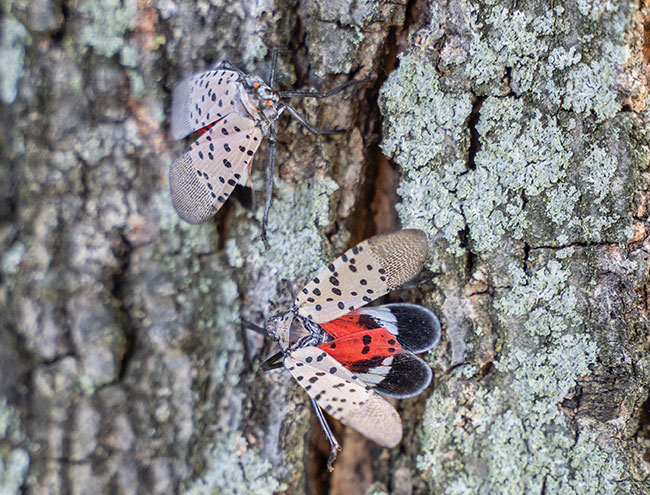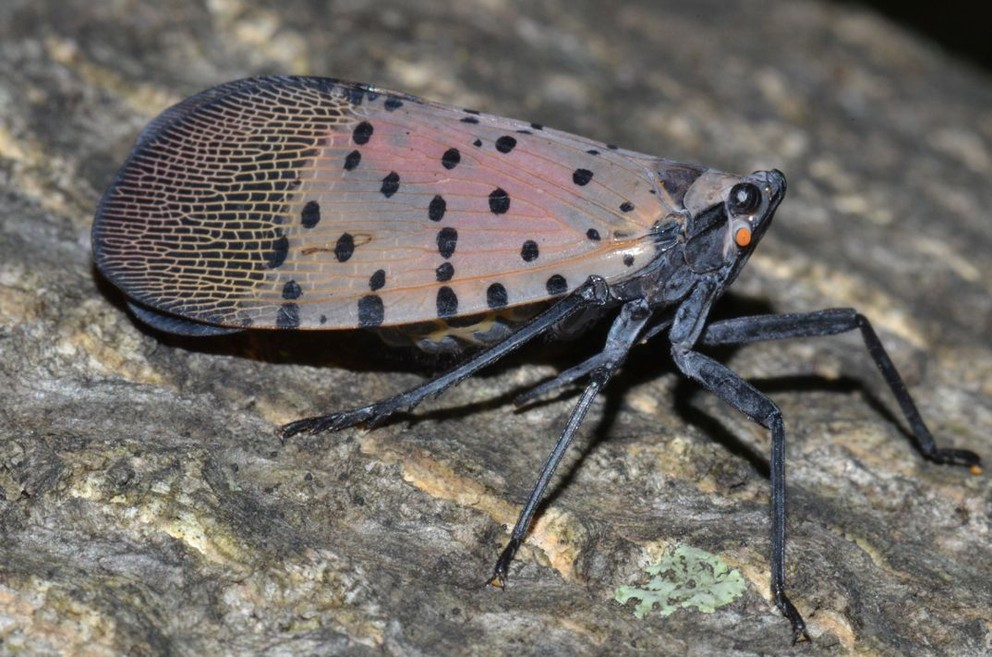If you’ve noticed a strange-looking bug with flashy wings hanging out on your deck or trees, don’t brush it off. That might just be a spotted lanternfly—and this little pest is bad news. In recent years, it’s gone from being an obscure insect to one of the most destructive invaders in the U.S.
But what exactly is it? Why does everyone suddenly care? And most importantly—what should you do if you find one? Let’s break it down.

What Exactly Is the Spotted Lanternfly?
The spotted lanternfly (Lycorma delicatula) is an invasive species originally from China, India, and Vietnam. It first popped up in Pennsylvania in 2014 and has since spread like wildfire across the eastern U.S., including New Jersey, Virginia, and Ohio. And it’s not stopping.
What makes it so recognizable? Adult lanternflies are about an inch long, with light gray wings peppered with black spots. When they fly, you’ll spot bold flashes of red from their hind wings. Their younger selves (nymphs) start out black with white polka dots and later turn bright red before becoming adults. Cute? Maybe. Harmful? Absolutely.
Video: What To Do If You Come Across A Spotted Lanternfly
Why You Shouldn’t Ignore This Pest
At first glance, they might seem harmless—just another colorful bug in the backyard. But don’t be fooled. These insects are a triple threat to your wallet, the environment, and your peace of mind.
1. They Wreak Havoc on Agriculture
Lanternflies suck the sap out of more than 70 plant species—grapes, apples, hops, pines, maples… the list goes on. When they feed, they weaken the plant, leaving it vulnerable to disease. Crop yields suffer. Vineyards can face financial devastation. If you like wine, fruit, or trees, this matters.
2. They Disrupt the Ecosystem
They’re not just bothering farmers. Lanternflies also target native trees, which means our forests could suffer long-term damage. That can throw off the balance of entire ecosystems, hurting birds, insects, and other wildlife that rely on healthy trees.
3. They’re Just Gross to Live With

Besides being damaging, these bugs are downright annoying. When they feed, they secrete a sugary waste called “honeydew” (and no, it’s not as sweet as it sounds). This stuff attracts wasps and other bugs and leads to a nasty black fungus called sooty mold. You don’t want this on your trees, porch, or car.
So… How Do You Get Rid of Them?
If you spot one, you need to act fast. This isn’t the kind of thing you just walk past and forget. Killing spotted lanternflies helps slow their spread and protects your neighborhood, parks, and local farms. Here’s how to do it safely and effectively.
Manual Squishing (Yes, Seriously)
Sounds simple, right? Because it is. If you see one—squash it. Same goes for the nymphs. Just make sure to wear gloves or use something like a credit card or stick if you don’t want to get bug goo on you.
Smash the Eggs, Too
Video: What is a Spotted Lanternfly?
Spotted lanternflies lay egg masses that look like grayish mud splattered on tree trunks, outdoor furniture, rocks, or even your car. Scrape these off into a bag filled with hand sanitizer or rubbing alcohol. That way, the eggs won’t hatch in the spring and start the cycle all over again.
Sticky Tree Bands Work—But Use With Care
Tree bands are like flypaper for bugs. Wrap them around tree trunks to trap the crawling nymphs before they reach the canopy. One warning though: these bands can catch birds or squirrels by accident. To avoid that, cover the bands with mesh or wire so only the insects get stuck.
Use Insecticides Responsibly
There are several sprays that work against lanternflies, including neem oil and insecticidal soaps. Just be cautious. Always follow the instructions, and don’t go spraying chemicals near food crops, kids, or pets. When in doubt, talk to a local pest control expert.
Don’t Forget to Report Them

If you live in a state where the lanternfly is considered a serious threat, your local Department of Agriculture wants to know about sightings. Reporting helps track the spread and inform control efforts. Even snapping a photo and dropping a pin on your location can help the pros do their job better.
What States Should Be on High Alert?
Right now, the lanternfly has been confirmed in multiple eastern and midwestern states, including:
- Pennsylvania
- New Jersey
- Delaware
- Maryland
- Virginia
- Ohio
- Indiana
- New York
- Connecticut
But that list is growing. And if you’re outside that zone, don’t get too comfortable—this pest can hitchhike across state lines on firewood, cars, or furniture. That’s why staying alert matters everywhere.
Why Every Backyard Counts in This Battle

You might think, “What difference can I make?” But every egg mass scraped and every adult squashed slows down the spread. This isn’t just about protecting farms—it’s about keeping your trees healthy, your porch mold-free, and your neighborhood from turning into a bug warzone.
Think of it like this: the spotted lanternfly is a spark, and every backyard it invades is dry kindling. The more we all chip in, the better chance we have of putting out the fire before it spreads too far.
Conclusion: One Bug, Big Consequences—But You Can Help
The spotted lanternfly may look harmless, but don’t let its pretty wings fool you. It’s a serious threat to agriculture, the environment, and even your backyard peace. By staying informed, taking action, and encouraging others to do the same, you can help stop this pest in its tracks.
So yes—go check your trees. Your quick response today could help protect thousands of plants tomorrow. Don’t wait until it’s too late. Squash it, scrape it, report it—and tell your neighbors to do the same. Let’s fight back, one bug at a time.


